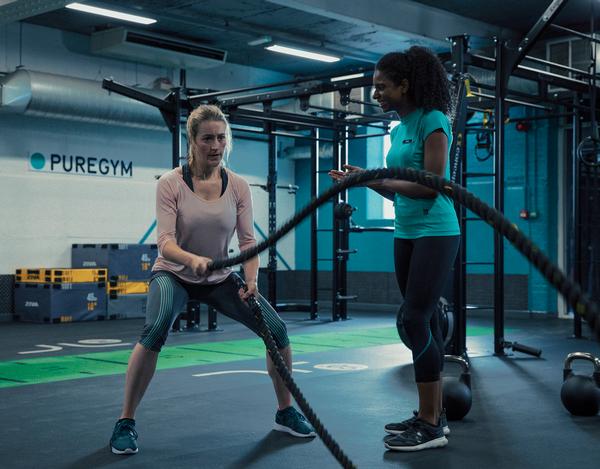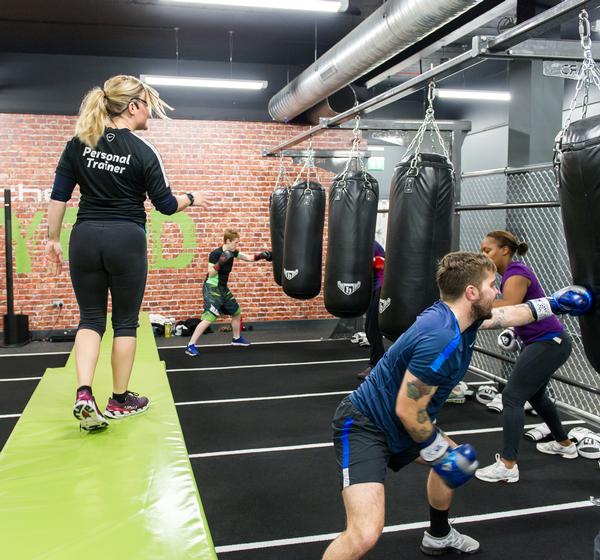|
Leisure Management - Get real

Ask an expert

|
|
| Get real
|

Finding the right location for a club is essential, but competition for prime locations is hot. Steph Eaves asks those in the know for advice on how to succeed in the current real estate market
Steph Eaves, Health Club Management and Sports Management
|


Ten Health and Fitness operates at ten locations in London
|
|
|
|
 |

Justin Rogers
Creative director
Ten Health and Fitness
 |
|
For fitness providers, growth equals expansion – more sites in more locations.
But good properties are harder to find and afford than ever. Demand for real estate has risen hugely. As have rents and business rates, with prime London rents more than doubling in the last five years.
However, as a result of a massive increase in supply, a price-sensitive customer base and the rise of aggregators such as ClassPass, membership and class rates haven't followed suit.
With margins tighter than ever as a result, the difference between success and failure comes down to one simple fundamental: the ability to find the right space at the right rent, and make sure it generates the right amount of revenue.
If it doesn’t, everything else is irrelevant – no matter how cool your fit-out, how insta-friendly your trainers or how engaged your customers.
There may be a correction in rents, but I don’t think it’ll come soon enough or be big enough for some operators.
Given the pressures property costs put on profitability, operators will have to be more agile and creative about how they use their sites to maintain margins.
That could include operators coming together to share space and facilities. It could involve adapting spaces that would otherwise be unused or hard to let.
And it could see providers opting out of London in favour of suburbs and regional cities, where property costs are lower but where they can still charge at or close to London prices.
"Operators may opt out of London in favour of suburbs and regional cities where they can still charge London prices"
|
|
|
In the last few years I’ve really seen a change, as landlords and developers have started to recognise the advantages of having a gym in their developments – gyms are attractive to consumers and can drive significant footfall, which in turn can attract other tenants.
Alongside value, convenience is the most important factor for people looking to join a gym. So it follows that our number one focus has to be on securing the best sites with the right attributes for that location, such as free parking or access to public transport, making it easy for members to get there.
Secondly, a good site in the right location should stand the test of time, even when competition intensifies.
You’re typically making a 10-15 year decision and investing a significant amount of capital, so it’s worth spending time upfront understanding the locations where your business is most likely to succeed.
Another factor is that landlords and developers tend to think longer-term than most operators, keeping in mind the longevity of their investment. Clearly it makes a big difference to them if they can attract a market-leading tenant, with a strong property covenant.
One of our strengths is our ability to successfully operate from a wide variety of property types, and the current challenges being faced by retailers present a great opportunity.
As property continues to come onto the market, there will be a shortage of retail tenants to fill it. We’re in a great position to take advantage of that.
| |


|

Pure Gym has a strong covenant, putting it in an attractive position when it comes to securing property deals |
|
|
 |

Martin Long
CEO
DW Fitness First
 |
|
The right location is the key driver of success and building a multi-faceted location strategy is critical. This includes four models: out of town, town centre, shopping centre and the London model.
At DW Fitness First we ensure we hit all of these areas with our business planning across our leisure proposition – this has been fundamental to ensuring DW Fitness First is a unique and successful fitness chain within the sector.
We also have a distinct advantage in our group end-to-end proposition, which spans both the leisure and retail markets. This in itself adds great insight and opportunity.
The major trend, of course, is the growth of the boutique offering in London. This has created rental inflation, which is unlikely to be sustainable. Space in the city is already expensive and operators compete with retail and office space, as well as residential.
Landlords ultimately achieve a better return from these areas, but leisure is an essential part of the economy and tenant mix.
Traditionally many of the London gym spaces are allocated to basement and now with the growth of the boutiques we're seeing price pressure here as well, however, the boutique model is yet to be proven in London.
Finding the right locations for DW Fitness First hasn’t been without challenges, however recent weaknesses within the property market, and the retail market specifically, have created opportunities.
The closures of Toys 'R' Us and BHS, for example, released surplus space, some of which can be repurposed for fitness.
At DW Fitness First we’ve taken advantage of what’s happening across the broader property market, for example, in Bristol we created a new gym after retail chain B&Q reduced the size of its space. This is now one of our flagship gyms.
In short, having a detailed understanding of the prevailing property market combined with a robust multi-faceted location strategy is fundamental to building a successful fitness chain.
"In Bristol we created a new gym after retail chain B&Q reduced the size of its space. This is now one of our flagship gyms and is incredibly successful"
| |


|

DW Fitness First is
developing four distinct
property types and
locations into gyms |
|
|
 |

Stephen Rought-Whitta
Head of property
énergie Fitness
 |
|
Suitable property will be a little easier to come by in the next few years.
By the same token, local authorities will be starting to feel the effects of more and more empty property and I can see obtaining D2 planning consents becoming less problematic, especially in areas which have – until now – been challenging.
By far the most important thing for me is to find property that not only works at the outset but will also be sustainable throughout the whole term of the lease.
Not only is it important to ensure that the rent is sustainable, but also the location. To this end it is important to build good relationships with landlords, developers and agents – good local market knowledge is invaluable when it comes to finding sites.
Of huge importance is the physical nature of the space – when considering premises, it's important that the building is capable of being adapted to reflect future trends, for example, the growth in functional exercise and HIIT.
It's to the high street’s detriment, but this industry’s benefit, that retailers are shedding space at an alarming rate and landlords are realising that fitness industry tenants are a good prospect and certainly better than no tenant at all.
"Retailers are shedding space at an alarming rate and landlords are realising that fitness industry tenants are a good prospect and certainly better than no tenant at all"
| |


|

énergie Fitness is rolling out Thé Yard – its boutique franchise offering – and looking for suitable sites for franchisees |
|
|
 |

Andrew Russell
Leisure Property Forum
 |
|
To succeed in this leasing market, operators need to have a clear idea of what’s important to the success of their business, their key requirements and the areas where they can be flexible.
The majority of the operators we deal with work on a leasing-based model, because buying freeholds would take up a lot of their capital, limit their opportunity to expand and would generally slow down their acquisition plans and roll-out of new units.
From a landlord's perspective, operators need to articulate what their fitness chain offers, over and above simply a secure income stream and a solution to empty space. It’s critical operators have the ability to clearly explain their concept, their competitive edge and USP. They need to demonstrate a deep understanding of their business – what makes it successful and what benefits it will bring to a landlord's development.
Ideally an operator has existing units for landlords to look at that have been successful, as it always helps if landlords can see the concept in the flesh to show that the operator can deliver what they promise.
To communicate these things, a clear, well laid-out landlord pack that explains the concept, business plan, funding, customer type and benefits that the club will bring to the location is essential.
"It’s critical that operators have the ability to clearly explain their concept, their competitive edge and USP"
| |


|

Barry's Bootcamp is part of the new boutique fitness sector that has emerged in recent years, changing the market |
|
|
Andrew Russell talks us through recent gym property trends
we’ve witnessed a polarisation in the health and fitness market. At one end, there's been a rapid growth of the value fitness sector, led by The Gym Group and Pure Gym, and at the other there's been growth in the premium market, led by David Lloyd, Virgin Active, etc. Meanwhile, the mid-market has been squeezed and we've seen operators such as LA Fitness and Fitness First suffer. However, over the last five years a new segment of the market has emerged – the boutique or specialist fitness sector, led by operators such as Frame, Kobox and Barry’s Boot Camp, to name a few. These operators are much more flexible when it comes to the real estate space they can use. They can fit into units of around 5,000 sq ft or less and – importantly – they can afford to pay higher rents per square foot.
|
|
 |
| Originally published in Health Club Management 2018 issue 6
|
|
 |
|